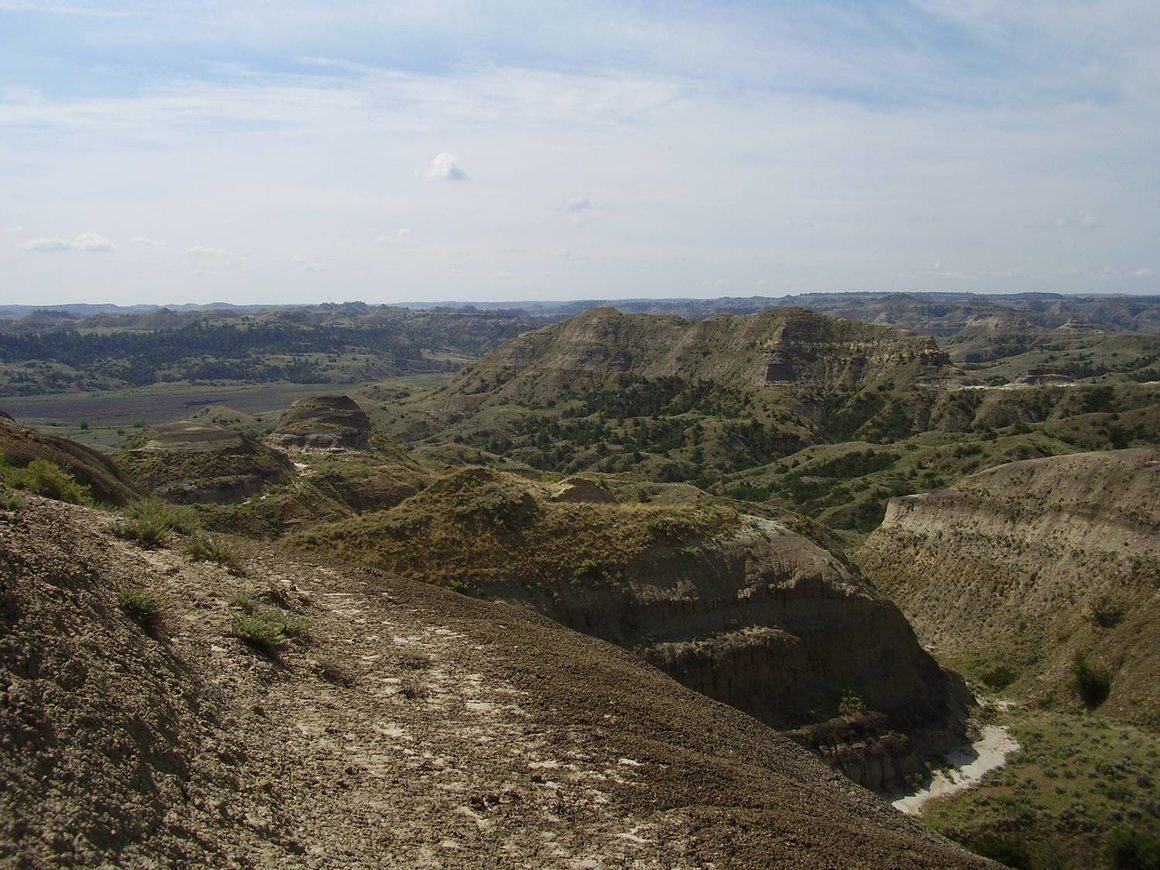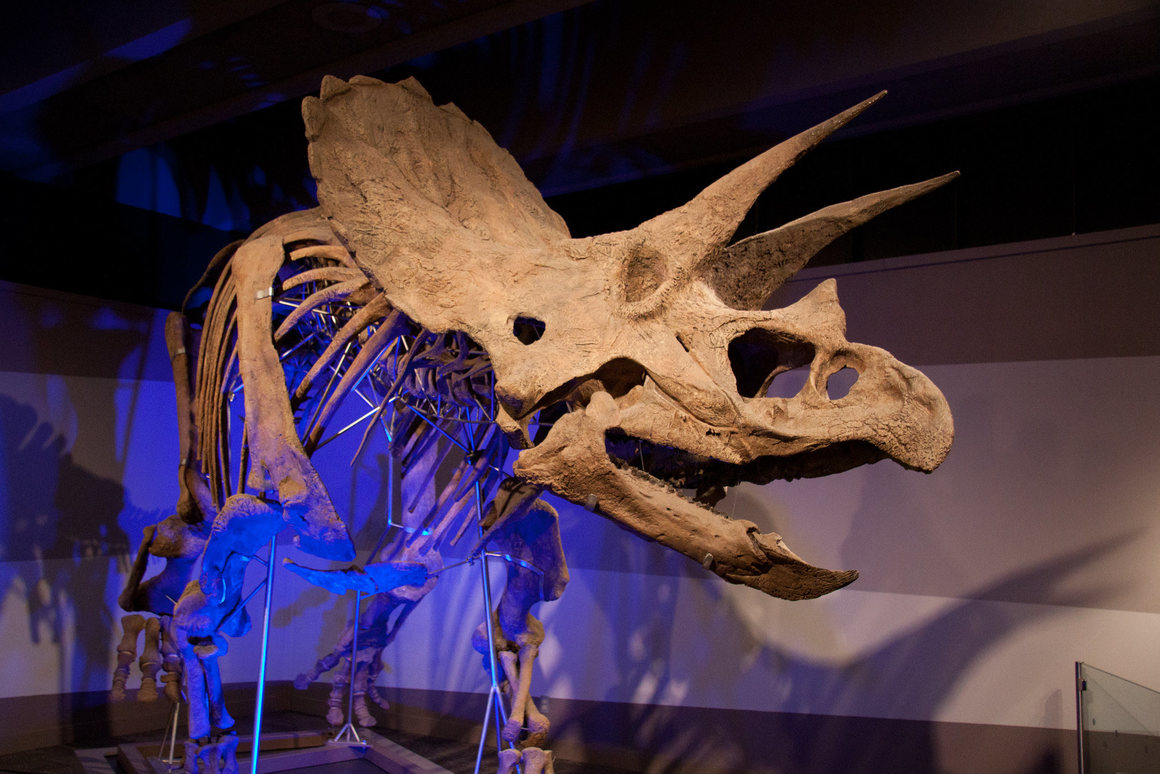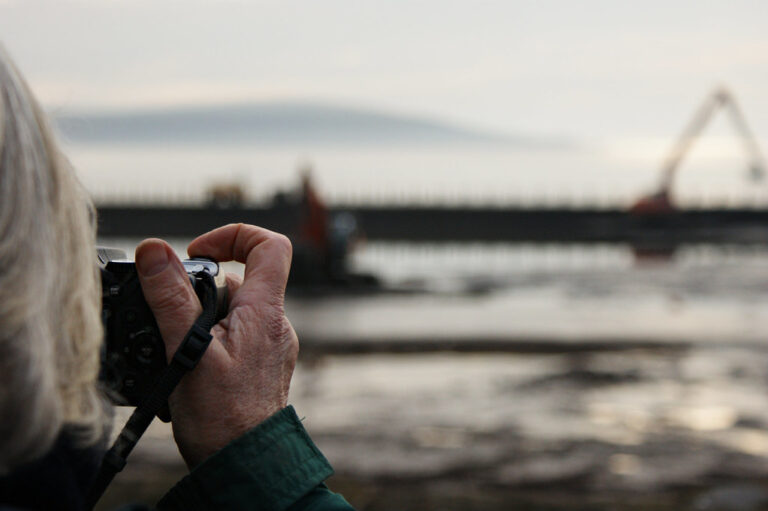The Fossils That Get Away (From Scientists)
Stan is very big, very old, and very popular. Roughly 65 million years young, Stan long ago retired from trampling, stalking, and gnawing across a steamy landscape of palms and gingkoes, and tussling with family. Like many other retirees, Stan now lives a life of quiet leisure.
Stan hasn’t been lounging on the lido deck of a cruise ship, but rather soaking it in from a prime, street-facing perch at Christie’s auction house in New York City. In September and October, the Midtown flagship space was a pied-à-terre of sorts for a creature that hasn’t been active since the Cretaceous. Stan is a Tyrannosaurus rex skeleton—a very complete, very expensive one—and the exhibit, the prelude to a record-smashing sale, wound up being the last time the dinosaur’s many fans could say hello before it disappeared into anonymous hands—at least for now.
Stan, more formally known as specimen BHI 3033, is named for Stan Sacrison, the amateur paleontologist who spotted its massive pelvis jutting out of a sandy cliff in South Dakota’s fossil-rich Hell Creek Formation in 1987. A few years later, the skeleton was excavated by workers at the Black Hills Institute of Geological Research, the same outfit that unearthed the T. rex that would be christened SUE and now resides at the Field Museum in Chicago. Stan’s skull has been called “the finest rex head on record,” according to journalist Paige Williams in her book The Dinosaur Artist: Obsession, Betrayal, and the Quest for the World’s Ultimate Trophy. Over the long stretch of time that the painstakingly reconstructed creature lived at the Black Hills Institute, the organization sold casts of the stunning specimen for a handsome sum.

When the whole skeleton went up for auction in October 2020, the sale rankled many experts, who worried that the prized specimen would disappear into a private collection. Fossil auctions often make paleontologists nervous for this reason, because private buyers are free to shut down access to both researchers and the public—unless they decide to donate it to a museum.
Items held by museums are very useful to scientists, in part because they can return to old specimens with new questions and fresh techniques for answering them. (In recent years, researchers turned to museums’ old collections of histological slides, soot-covered feathers, and preserved animal specimens to learn about mollusk “brains,” historical air pollution, and the astonishing array of tiny bat penis bones, to name just a few examples.) Some private collectors even possess holotypes, the definitive specimen of a species against which all others are measured. Scientists rely on those in particular for comparisons, such as to gauge whether another find represents a new species.
Before Stan went under the hammer in October 2020, the Society of Vertebrate Paleontology, an organization of 2,000 paleontologists from around the world, sent a letter to Christie’s, asking the auction house to restrict the sale to “bidders from institutions committed to curating specimens for the public good and in perpetuity, or those bidding on behalf of such institutions.” The sale went ahead as planned, and Stan sold for nearly $32 million, to an unnamed buyer.
Moreover, Stan’s sale came with some major restrictions that made the fossil less appealing, even to museums with stuffed coffers, including a ban on making 3D models or merchandise based on the skeleton, The New York Times reported. Museums that bring in a portion of their revenue from gift-shop swag would be hard-pressed to justify spending that much money on some bones that they would not be able to slap on T-shirts or drink cozies. “We would never purchase something unless we owned the rights,” Mark Norell, the paleontologist in charge of fossil amphibians, reptiles, and birds at the American Museum of Natural History, told the Times after the sale.

This isn’t the first time that the sale of a spectacular fossil has upset the paleontological community. The Society of Vertebrate Paleontology also objected to a high-profile sale in 2018, when the French auction house Aguttes sold an allosaurid skeleton from Wyoming to an unidentified buyer. In 2008, Christie’s brokered a sale of a triceratops skeleton in Paris, also into private hands. After the triceratops emerged from the ground in North Dakota, the state paleontologist, John Hoganson, said it would be a “tragedy” if the specimen disappeared from public view. (He lobbied for its return to its old ambling grounds.)
While scientists show concern about the public sale of fossils, they also lament the ones they never know about in the first place. “Most of the time fossils that are in private hands go straight there from dealers to buyers, and scientists rarely know what they are missing out on,” writes Jingmai O’Connor, a curator of fossil reptiles at the Field Museum, in an email. “It’s more rare that something like Stan occurs—that specimen is well known to science, but then gets sold to a private person.”
It’s hard to say what’s next for Stan—the buyer remains unknown. But fossils that are thought to have been lost to science sometimes turn up again. That triceratops, for instance, now lives in the Museum of Science in Boston, a gift from an anonymous donor who asked that it be dubbed “Cliff,” after their grandfather. As a species, T. rex is long gone, but as far as potential visitors are concerned, it’s too soon to call Stan extinct.





